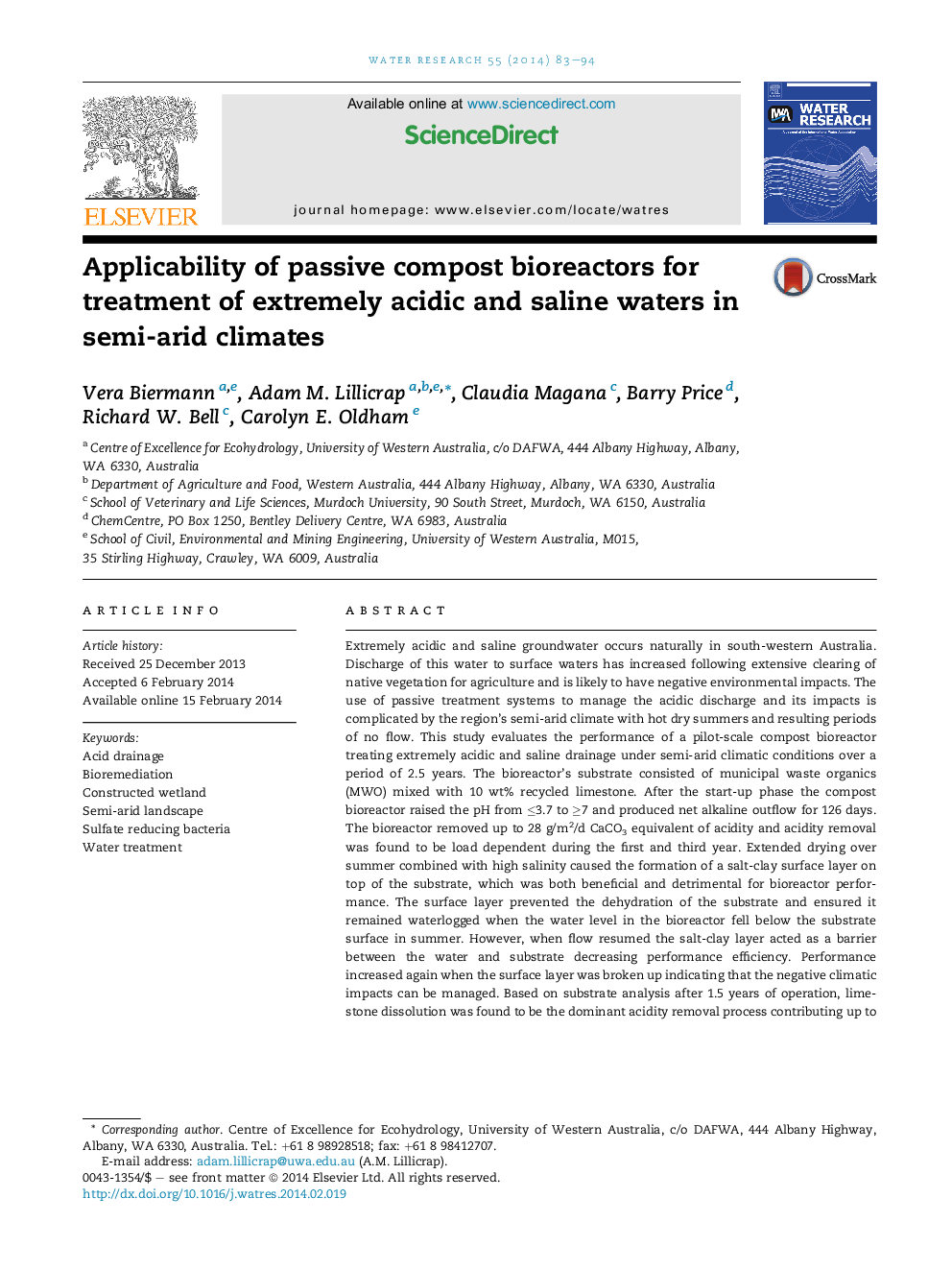| کد مقاله | کد نشریه | سال انتشار | مقاله انگلیسی | نسخه تمام متن |
|---|---|---|---|---|
| 6366719 | 1623113 | 2014 | 12 صفحه PDF | دانلود رایگان |
عنوان انگلیسی مقاله ISI
Applicability of passive compost bioreactors for treatment of extremely acidic and saline waters in semi-arid climates
ترجمه فارسی عنوان
کاربرد بیوراکتورهای کمپوست منفعل برای درمان آبهای بسیار اسیدی و شور در آب و هوای نیمه خشک
دانلود مقاله + سفارش ترجمه
دانلود مقاله ISI انگلیسی
رایگان برای ایرانیان
کلمات کلیدی
زهکشی اسید، درمان زیستی، تالاب ساخته شده، چشم انداز نیمه خشک، سولفات کاهش باکتری ها، تصفیه آب،
موضوعات مرتبط
مهندسی و علوم پایه
علوم زمین و سیارات
فرآیندهای سطح زمین
چکیده انگلیسی
Extremely acidic and saline groundwater occurs naturally in south-western Australia. Discharge of this water to surface waters has increased following extensive clearing of native vegetation for agriculture and is likely to have negative environmental impacts. The use of passive treatment systems to manage the acidic discharge and its impacts is complicated by the region's semi-arid climate with hot dry summers and resulting periods of no flow. This study evaluates the performance of a pilot-scale compost bioreactor treating extremely acidic and saline drainage under semi-arid climatic conditions over a period of 2.5 years. The bioreactor's substrate consisted of municipal waste organics (MWO) mixed with 10 wt% recycled limestone. After the start-up phase the compost bioreactor raised the pH from â¤3.7 to â¥7 and produced net alkaline outflow for 126 days. The bioreactor removed up to 28 g/m2/d CaCO3 equivalent of acidity and acidity removal was found to be load dependent during the first and third year. Extended drying over summer combined with high salinity caused the formation of a salt-clay surface layer on top of the substrate, which was both beneficial and detrimental for bioreactor performance. The surface layer prevented the dehydration of the substrate and ensured it remained waterlogged when the water level in the bioreactor fell below the substrate surface in summer. However, when flow resumed the salt-clay layer acted as a barrier between the water and substrate decreasing performance efficiency. Performance increased again when the surface layer was broken up indicating that the negative climatic impacts can be managed. Based on substrate analysis after 1.5 years of operation, limestone dissolution was found to be the dominant acidity removal process contributing up to 78-91% of alkalinity generation, while bacterial sulfate reduction produced at least 9-22% of the total alkalinity. The substrate might last up to five years before the limestone is exhausted and would need to be replenished. The MWO substrate was found to release metals (Zn, Cu, Pb, Ni and Cr) and cannot be recommended for use in passive treatment systems unless the risk of metal release is addressed.
ناشر
Database: Elsevier - ScienceDirect (ساینس دایرکت)
Journal: Water Research - Volume 55, 15 May 2014, Pages 83-94
Journal: Water Research - Volume 55, 15 May 2014, Pages 83-94
نویسندگان
Vera Biermann, Adam M. Lillicrap, Claudia Magana, Barry Price, Richard W. Bell, Carolyn E. Oldham,
